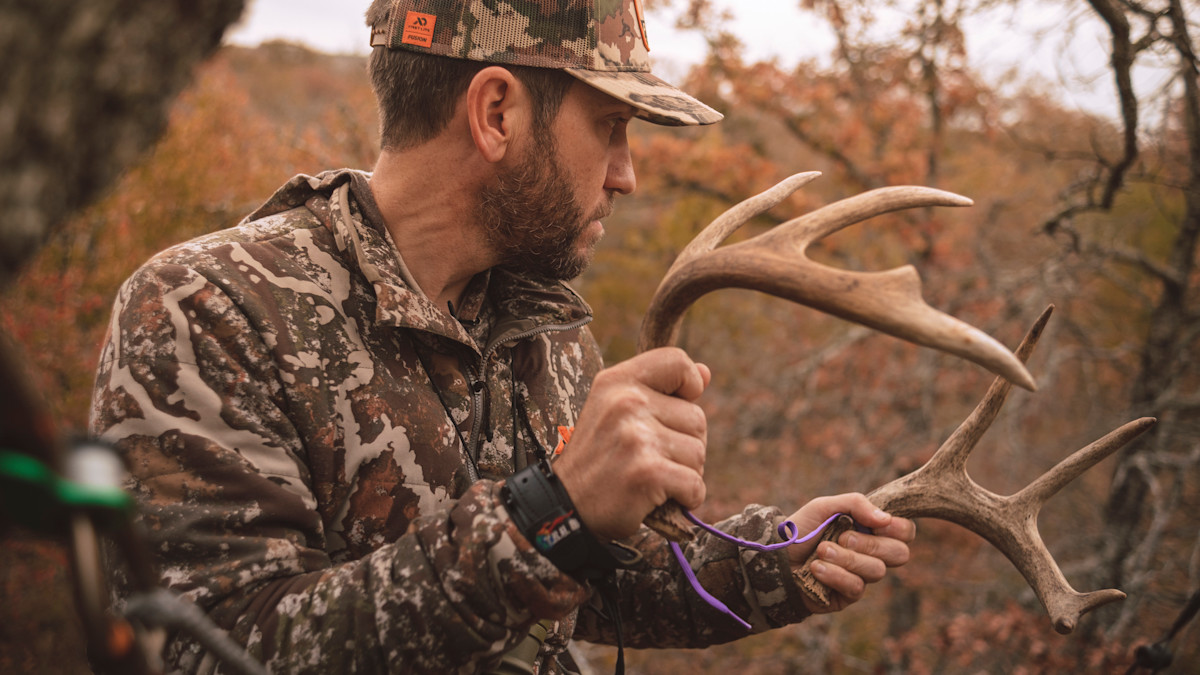
A typical blind-calling strategy for most hunters involves trying to make something happen during downtime. This might be a few hours into a morning sit, or during that lull time during an afternoon hunt where the sun is still high, and the woods are mostly dead.
Even during the rut, when bucks should move all day, you have to think about the timing of your blind calling sessions. Deer are crepuscular, which means they move most in low light. This also means that if a buck is going to bump into a rival and throw down, the most likely time for this to happen is, you guessed it—low light.
A rattling sequence at first light has higher odds of eliciting a response than a noontime antler clashing session. The same goes for creating a series of tending grunts and doe bleats. When the deer are most likely to be moving, and most likely to run into other deer, is when you want to blind call.
There are other situations that greatly increase your odds of shouting into the void and getting an answer. When a rain shower moves through, or when a front passes and the wind dies down, are two good opportunities. A sudden temperature drop as an arctic blast works its way into your area is another. Anything that should get deer moving is potentially worth a blind calling attempt. Just remember, even if the conditions are ripe for it, not all calling sessions are created equal.
Let’s Get Ready To Rumble
Have you ever heard a real buck fight? A lot of hunters haven’t, so a lot of hunters rattle like they’ve seen hunters do it on hunting shows. A real buck fight, even a sparring session, is a loud affair. I once had a pair of nearby bucks go at it in a North Dakota river during the pre-rut, and it was the most amount of noise I’ve ever heard two deer make.
The clashing of their antlers was loud, but not as loud as all of those river rocks clacking together or all of the water splashing around. Most hunters are far too focused on the sound of antlers hitting together, but they miss out on really selling the ruse.
Don’t be afraid to break, or shake, the branches around your setup. When big animals fight, the forest suffers. If you’re going to try to convince a deer you can’t see to come to your stand or blind, don’t half-ass it. Make some noise.
The Glory Of Grunting
Another common tactic for blind calling sessions is to grunt a few times in random directions or to try to do a series of grunts like a buck tending a doe. Again, if this actually happens in the woods it is always accompanied by the sound of at least one big animal moving.
Years ago got into a stand during the first week of November and realized pretty quickly that if I wanted to shoot on my right side, I had to break a good-sized, dead branch. It was going to be a loud crack, no matter what so I figured I’d grunt a few times before and after I snapped it off. I’ve still never had a better response from calling than I did in that moment.
A buck that must have been just over the ridge, came running in and posed up at 10 yards. He truly believed there was a chase going on. A short contact grunt (or three) is great for early October whitetails, but bucks during the pre-rut want to hear more. Make them think that one of their rivals has found an amenable girlfriend, and they are playing grabass in a small area.
Conclusion
If you’re going to blind call during the pre-rut and rut, commit to the tactic. Read the conditions, consider what you’re trying to say to the local ungulates, and then do your best to create those sounds. It won’t work every time, but this is the best way to take some downtime and turn it into an adrenaline dumper.
For more pre-rut hunting strategies, check out these articles: 3 Best Trail Camera Locations For Pre-Rut, Is Late October The New November For Whitetail Hunters, and Active Scrapes Worthy Of Hunting.



